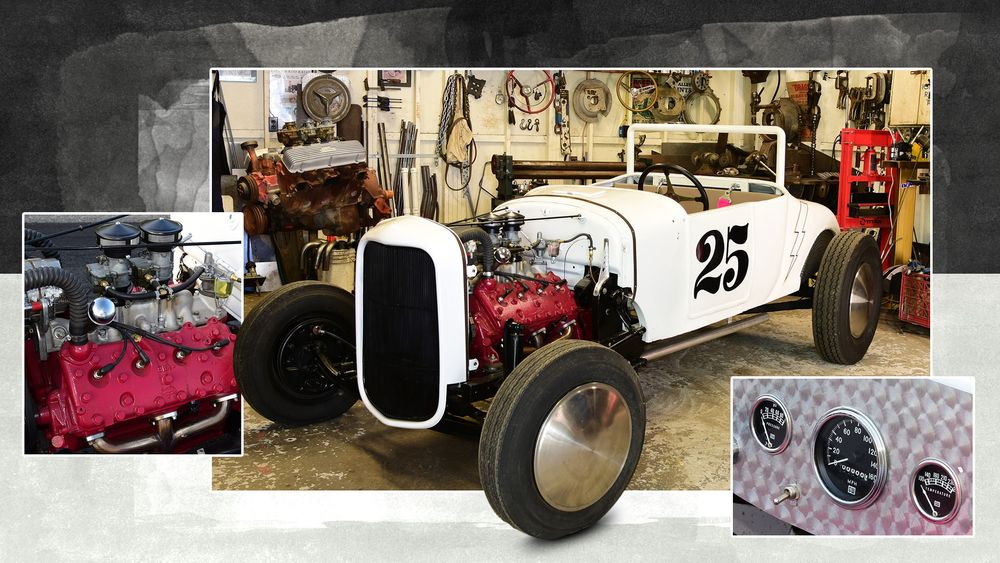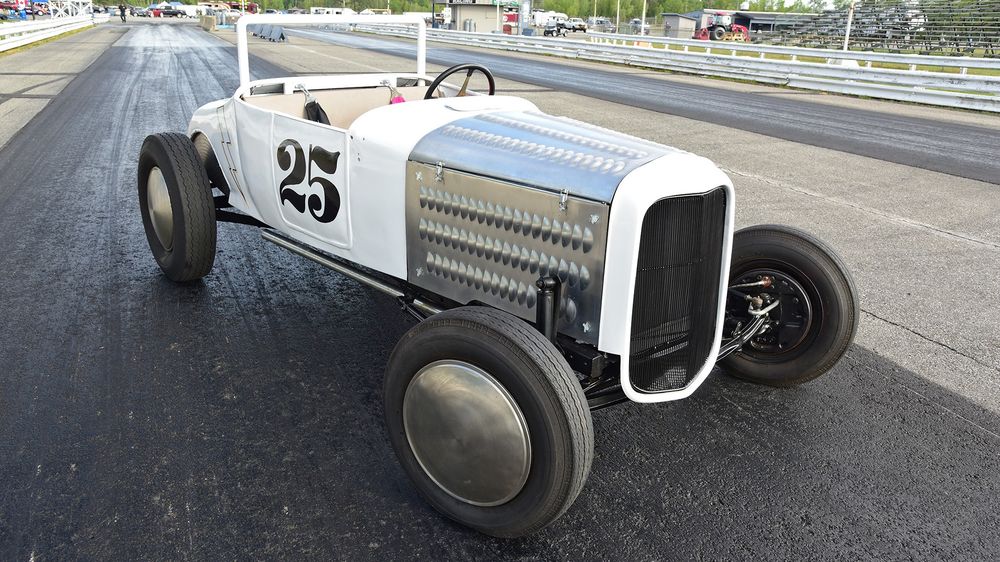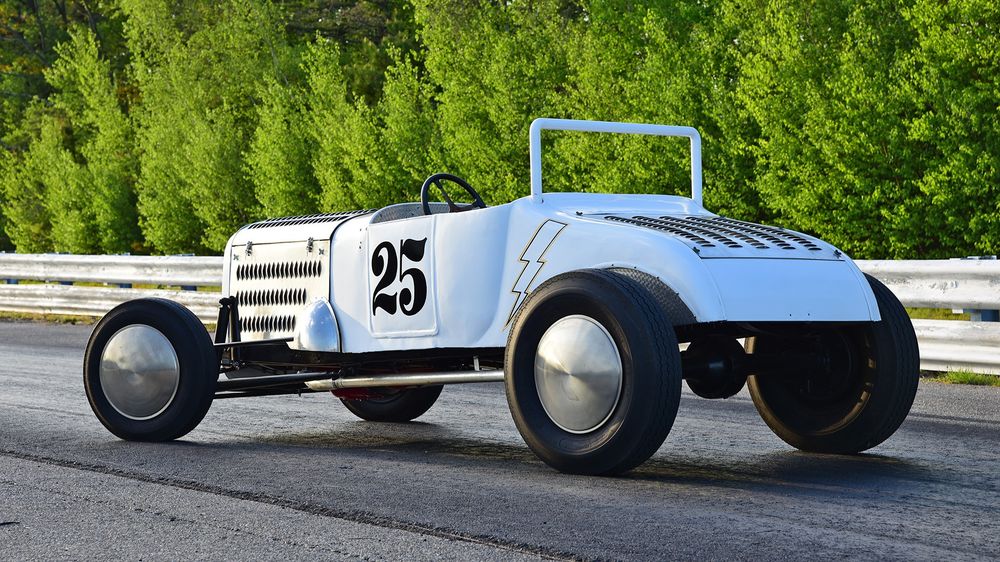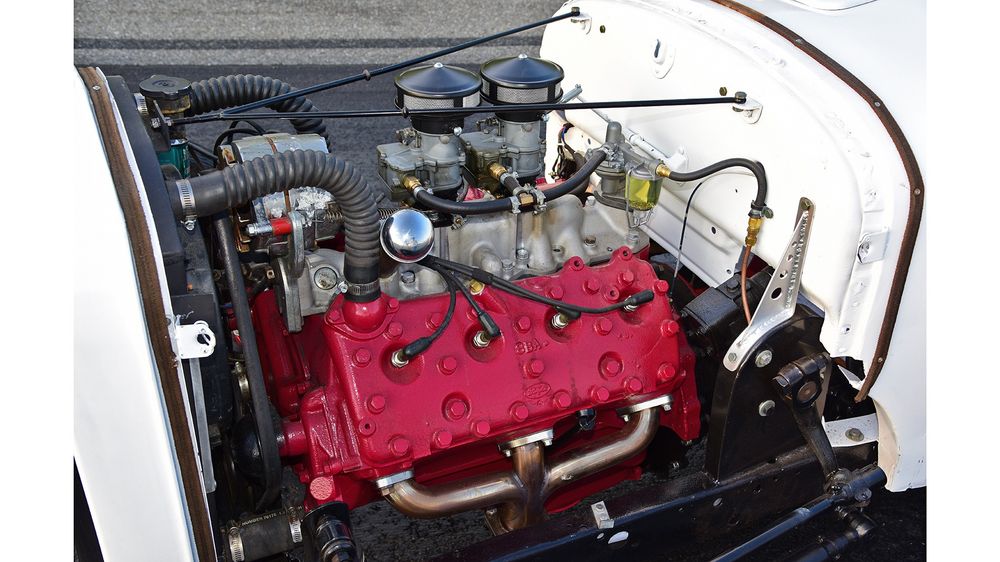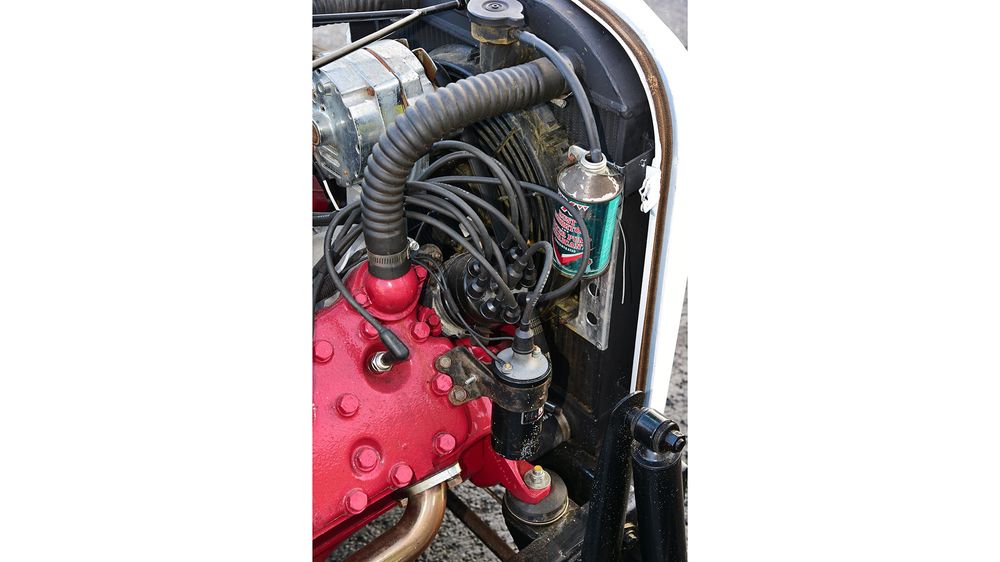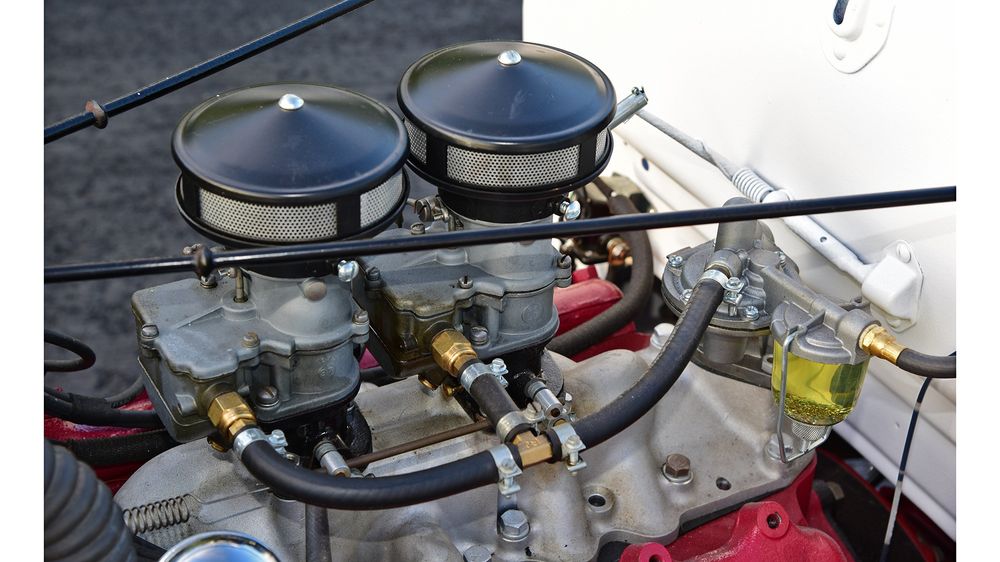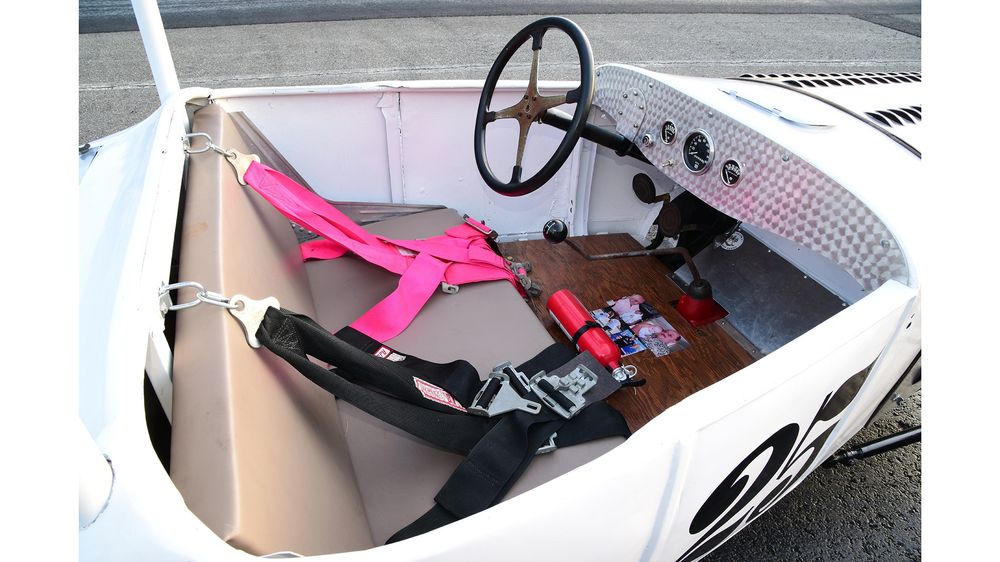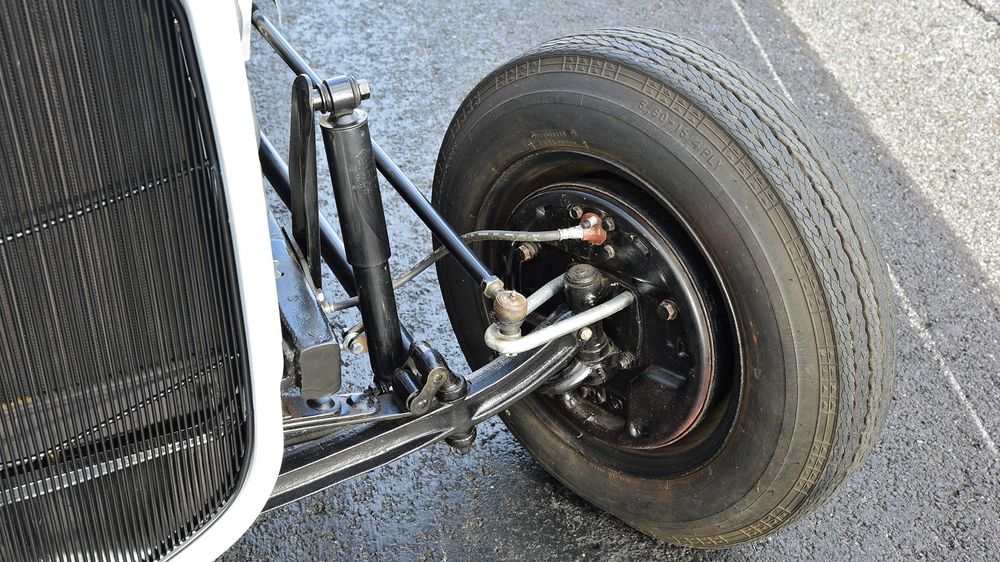This 1927 Ford Roadster was Built by a 16-Year-Old!
Kayleigh McEvoy got hooked on vintage drag racing at 14. Now she races her own ’27 Drag Roadster.
What is the future of hot-rodding? It’s a question that’s been asked thousands of times, generating plenty of answers across the spectrum. One focus has always been about bringing the passion and excitement to the next generation. While it’s easy to stare into the looking glass of our past, it’s another thing to bring that same devotion into the modern age. This ’27 Ford drag roadster belongs to 17-year-old Kayleigh McEvoy of Natick, Massachusetts, and it is a perfect example of teamwork and perseverance to bring a young hot-rodder’s dream to life.
AI Quick Summary
Kayleigh McEvoy, a 17-year-old from Natick, MA, built a 1927 Ford drag roadster with help from family and the hot-rodding community. Inspired by vintage racing, she learned to fabricate and race, completing the car for under $10,000. Her journey highlights what could be the future of hot-rodding.
This summary was generated by AI using content from this MotorTrend article
Read Next
0:00 / 0:00
Like every build that revolves around a journey, Kayleigh’s roadster has a great story to tell. Having grown up in a devout NASCAR household, her earliest memories revolve around enjoying the races on a regular basis surrounded by two generations of her family cheering on their favorite teams. Her youthful aspirations of someday becoming a driver were also complemented by spending plenty of time in the garage with her dad, learning automotive basics while helping him work on the family car. It’s easy to see she was destined to take a performance path with that heritage. There’s always a magic moment that changes everything, and for Kayleigh, it was her parents, Jim and Ariane, receiving a call from family friend, Pete Flaven of East Coast Speed, inviting them to a local vintage drag race. As an active member of the Tornado’s Car Club, Pete would be racing one of his personal hop-ups and thought the family might enjoy the experience.
Having built several race cars to compete at the drags as well as The Race of Gentlemen (TROG), Pete had brought his ’32 Ford roadster to the races to compete. It was there that Kayleigh’s fascination with hot rods became real, with Pete offering to teach her how to drive the coupe at the age of 14. Before long, she had mastered the three pedals, and with her parent’s permission, she made her first pass with Pete in the passenger seat. Not long after, Kayleigh set her hopes on the possibility of building a drag car that would allow her to take on the eighth mile by the time she earned her license. Pete met with the family and outlined what it would take to bring a car to life, offering to donate an endless stream of parts from his personal collection to make it all happen, especially because it would support the future generation.
Once social media got wind of the project, an immediate whirlwind of attention gained amazing speed coupled with the support from numerous clubs, including the Tornado’s, Sin Alley Saints, and Infidels of Canada. Gathering the parts to get started, Pete spoke with club member Brandon Fish about donating a body from a rear-engine TROG racer the club had assembled a few years prior. The ’27 Ford body already had some racing history. It had been making passes back in the ’50s at Fontana Dragstrip in California.
To assemble a chassis capable of handling the demands of a nostalgia race car, Pete and Jim started with a ’30 Ford Model A spine with stock crossmembers, which were blasted clean, inspected, and treated to a coating of PPG gloss black. Out back, a matching ’30 Ford axle was refreshed, packed with 4.11:1 gears, and suspended by a stock wishbone, Model A transverse spring, and Monroe shocks. To set the stance just right, a ’34 Ford axle was matched to ’39 Ford spindles, anchored by a pair of split ’30 Ford wishbones, a matching transverse spring with four leaves removed, and Monroe shocks. Steering moves through a custom-mounted ’54 Ford F-100 box, while a vintage Mooneyes tank carries the fuel. When it’s time to drop anchor, a Mustang dual master moves fluid though steel lines laid out by Tim Boyle to ’39 Ford drums anchored at each corner, rebuilt with fresh internals from Joe’s Antique Auto in Uxbridge, Massachusetts. A set of original Ford steelies sized 15x4-inch front and 16x4-inch rear wear Firestone/Coker 5.50R15 and Cooper 7.50R16 tires; they’re dressed up by spun aluminum covers from Mooneyes.
When it came time to selecting a driveline for the roadster, it was obvious only a traditional Ford Flathead would fill the bill. Pete surfed his parts bin and came up with an original ’53 Ford 8RT engine to drop between the rails. Originally assembled by Ford in ’53, the engine packs a stock rotating assembly and cam accented by updated 8BA heads for added compression. A modified Offenhauser two-port intake breathes deep through a set of refurbished Stromberg 97-Series carbs topped by a stunning pair of satin black air cleaners donated by Grace & Company. A Mallory dual-point ignition lights the fire through a set of NOS Belden plug wires with exhaust roaring through a set of swap-meet-special stainless headers into a custom-fabbed 2-inch stainless race exhaust. To move the goods, a ’38 Ford trans donated by Fish was filled with fresh clutch parts and deftly matched to a torque tube to the rearend.
Bringing any vintage car back to life requires a special level of patience. However, if the car has been beaten to within an inch of its life, the job becomes even more involved. This old ’27 Ford roadster body had spent time on the dragstrip in California and then on the beaches racing at TROG, leaving it in need of a full restoration. In addition, it was decided to convert the car back to its original front-engine configuration. Getting started, Pete replaced the cowl section and firewall with original ’27 Ford steel and the lower quarter panels and rockers with replacement sheetmetal from Joe’s Antique Auto. From there, the doors were welded shut, and a traditional East Coast square rollbar was crafted for safety. A custom three-piece hood and trunklid were fabricated and handed over to club member Mike Letendre, who laid out the louvers. An original Deuce grille shell was then sectioned 4 inches and filled with a custom tube insert along with an aluminum steering blister to complete the updates. The body was then blasted clean and sent over to Don Uvezian (Kayleigh’s grandfather) of Uvezian Trucking in Millis, Massachusetts, to complete the bodywork. In true family tradition, Jim and Kayleigh lended a hand in the preparation. To bring it to the finish line, Don laid down a coating of PPG Industrial White gloss, perfectly accenting the aluminum and engine-turned inner wheelhouse panels. The late Brian Chainay of Chainay Kustoms painter the car’s race numbers and iconic lightning bolts across the quarter panels.
Inside, the roadster is all business, starting with a one-off aluminum engine-turned dash by Pete and filled with vintage Stewart Warner gauges. An original Bell four-spoke steering wheel mounts to a stock column, and Kayleigh shifts the gears with a modified original stick. The ¾-inch plywood floors were stained and finished by Ariane, accented by a custom bench seat covered in tan vinyl by Jim. It’s been a great learning experience for Kayleigh, who did plenty of blasting and painting as well as learning to fabricate, weld, and take part in the entire build of the car over an 18-month timeframe. With support from the close-knit hot-rodding community, her initial runs down the eighth-mile track with Mike as co-pilot taught her all the basics. From there, she was on to making passes within an hour, celebrating her 16th birthday weekend at the Northeast Vintage Drags in Oxford, Maine. Thanks to all the donated parts and labor, this roadster was built for less than $10,000, proving the dedication and camaraderie of the hot rod community that stepped up to help when the call went out. The future of hot-rodding looks bright as we support the next generation with the knowledge we’ve learned throughout the years.
